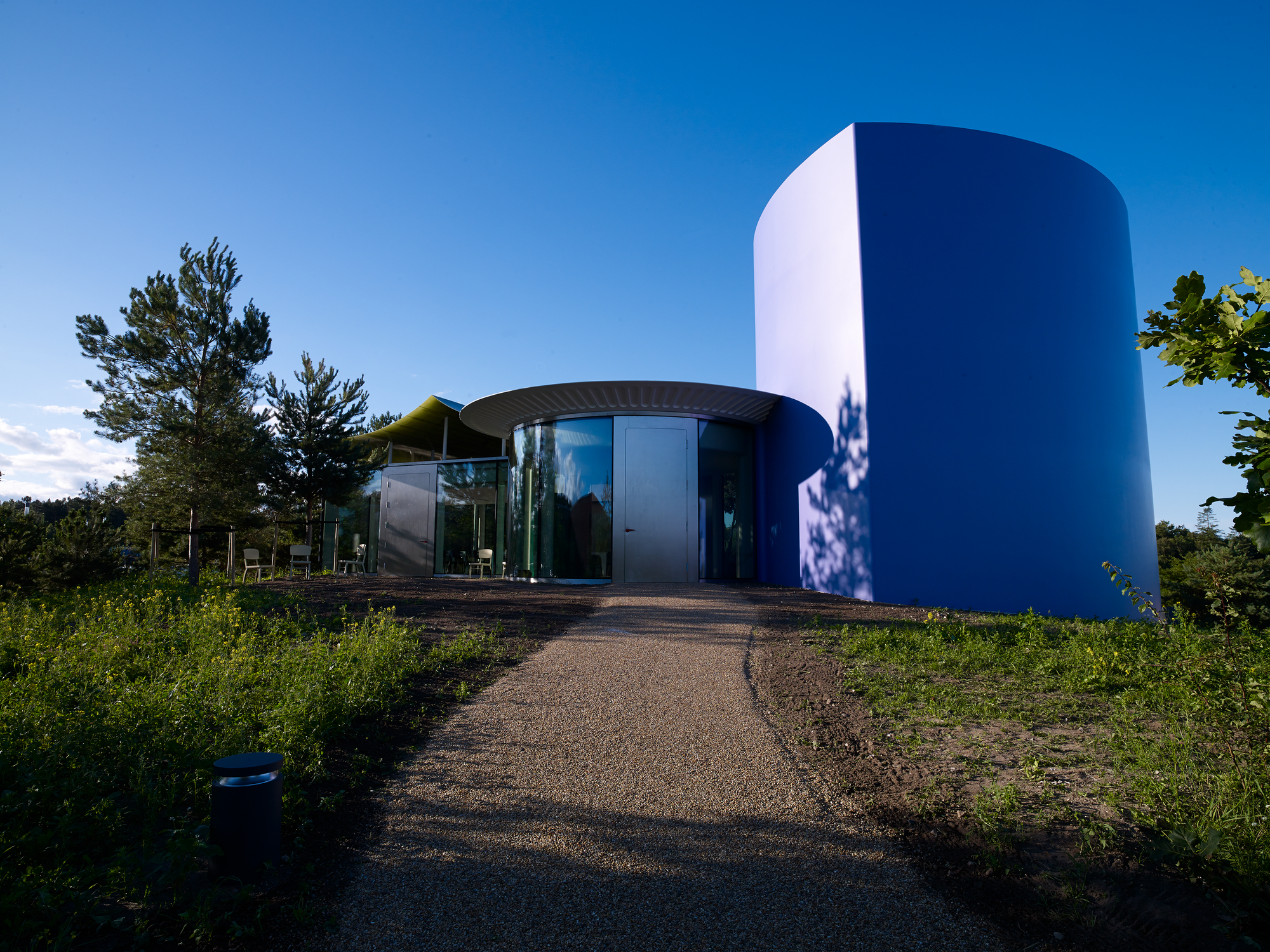
German sculptor and photographer Thomas Demand is known for creating disquieting hyperrealities, and now he’s channeling that vision into his first-ever building, a collaboration with Caruso St. John Architects.
Naturally, Demand didn’t just settle for a striking structure. The artist has transformed three everyday objects—a sheet of legal paper, a paper plate, and an American soda jerk hat—into three inhabitable spaces in the dunes of Denmark.
The building, titled The Triple Folly, is a Gesamtkunstwerk that “unites different forms of art, design, and craft to create a cohesive whole,” according to a statement from Kvadrat, the high-end textile brand that commissioned it. The structure will serve as a hospitality and conference venue on the dunes surrounding the company’s headquarters in Ebeltoft.
A sketch by the artist for the soda jerk structure. Courtesy of Thomas Demand.
The artist conceived the work after thinking about tents, a common human application of the types of wares that Kvadrat makes. He later arrived at the image of a pavilion—a tent large enough to accommodate crowds, and usually a sign of festivities ahead. The paper elements come from Demand’s own practice of building sculptures from cardboard and paper, then photographing and destroying them, exploring the longevity of symbols.
Demand worked closely with the team from Caruso St. John, the same architecture firm that won the RIBA Stirling Prize in 2016 for designing Newport Street Gallery and represented Britain at the 2018 Venice Architecture Biennale. In addition to collaborating on bringing mundane paper items to life at monumental scale, the team also designed interior details, including surfaces, furniture, and even the door handles.
Thomas Demand with a Rosemarie Trockel textile work. Photo by Nic Tenwiggenhorn.
Ultimately, Demand and his collaborators transformed the legal paper into “a faded yellow-and-black-lined folded ‘paper sheet’ made from translucent fiberglass,” which will serve as meeting space at Kvadrat headquarters, the statement read.
They translated the paper plate into fiberglass as well, creating “a formed sheet held above a cylindrical volume by thin columns” to house a kitchen and dining area. “Each volume has its own entrance, leaving it up to visitors to experience the dialogue between art and architecture as they see fit.”
The Triple Folly by Thomas Demand at Kvadrat HQ in Ebeltoft, 2022. Photo by Nic Tenwiggenhorn.
The soda jerk hat has become “an elliptical volume made of [a] welded fibreglass plate that rises from the coastal landscape.” Not only does the hat offer a living room area, it also serves as a roof overhead of a textile work by Rosemarie Trockel titled Yes but, which lends the room an acoustic coziness. (Kvadrat has owned the Trockel work since 2006.)
Demand’s collaboration with the company joins installations by Olafur Eliasson and Roman Signer on a sandy perch overlooking the sea.